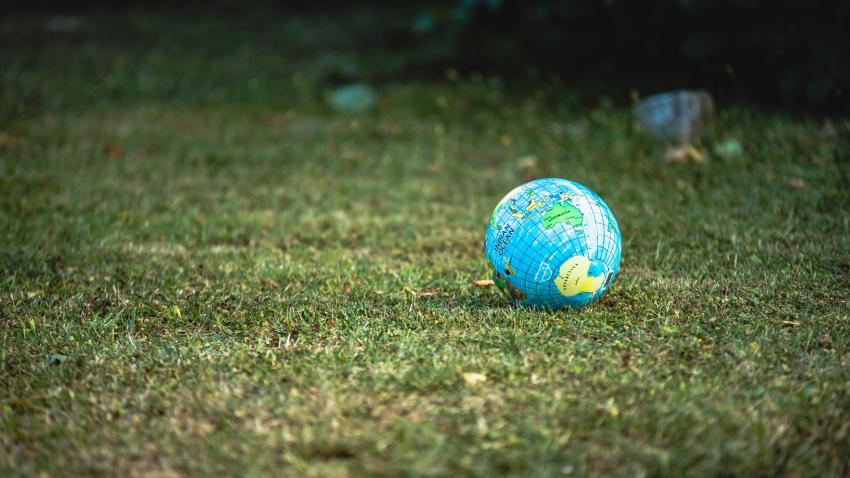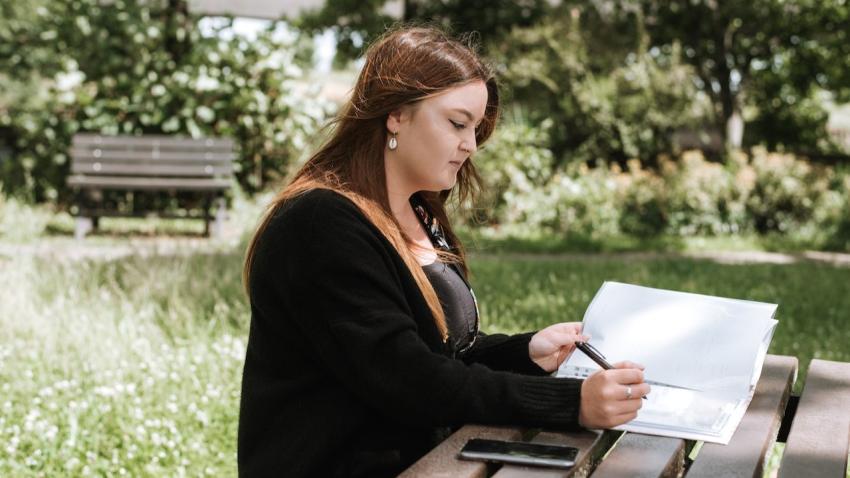Meet 3 Erasmus+ Teachers Academies projects on sustainability
Erasmus+ Teacher Academies is a flagship action of the current Erasmus+ programme. Three of the Academies, started in 2022 and running for three years, focus specifically on sustainability.

The goal of Erasmus+ Teacher Academies is to create European partnerships of teacher education and training providers and boost the European and international dimensions of teacher education in Europe.
Projects on sustainability
We interviewed 3 projects, and asked them about their main focus, work so far, target audiences and future plans.
EduSTA - Academy for Sustainable Future Educators
We want to give opportunities for teachers to be active change makers and further sustainable development, by providing them with adequate tools and competences. These opportunities take the form of digital open badges, which allow to perform, recognise, document and transfer such competences as micro-credentials.
Eveliina Asikainen, Coordinator
TAP-TS - Teacher Academy Project Teaching Sustainability
We engage primary and secondary-level educators in a professional learning community focused on the development of seven learning and teaching packages, aimed at developing sustainability competences as outlined in the European Commission’s GreenComp Framework.
Rachel Bowden, Coordinator
CLIMADEMY
CLIMADEMY focuses on providing a comprehensive training framework to increase the understanding of climate change drivers, impacts and mitigation options. The aim is to improve teachers’ efficiency in teaching and learning about climate change.
Nikos Kalivitis and Maria Kanakidou, Coordinators
What have you done so far?
So far, we have built a common understanding of the topic with the consortium, gathered experts’ opinion on the topic and organised workshops with teachers to understand their needs and expectations.
Who do you want to reach and how?
We want to reach teacher educators and education providers, student teachers as well as actively practicing teachers. The aim is to make it easier for teachers to further their education. In addition, influencing curricula will contribute to providing even more opportunities.
Which gap does your work fill?
There is a clear gap in teacher knowledge and their competences to act as change makers for the green transition. While there are many reasons for this gap, the lack of information and pedagogical tools for teachers are definitely a big part of it. This project fills this gap by providing more capabilities and competences for teachers.
Do you collaborate with specific stakeholders?
We are working with an advisory board which is made up of representatives of each country involved in the project, as well as groups outside the university such as ministries, national agencies, administration, and a vocational college.
We also have associate partners - teacher education networks in Europe – who help spread the knowledge and outcomes of the work.
How do you plan to disseminate the outcomes of the work?
Our discussions with all ministries and directorates in the partner countries are geared towards being able to disseminate the project’s work, namely by influencing curricula. Concretely, the results will also be shared in different types of seminars and conferences such as the Sustainability Science Days in Helsinki or Schools Go on Digital and Green in Germany.
What are the next steps for you and your project partners? What are your expectations for the upcoming year(s) and what do you want to achieve?
Finalising the description and criteria of competences is a next important step for our project. After that, we will start creating the digital open badges with the supporting materials, and preparing pilots for 2024. These pilots will include feedback gathering, adjusting the digital open badge driven pathways according to the feedback, and finalising the project and communication outreach in 2025.
Our main hope is to help teachers be more powerful thanks to quality and accessible opportunities for their professional development. We look forward to receiving feedback from both teachers and teacher educators running the pilots.
What have you done so far?
So far, we have established structures, and processes and activities for communication, collaboration and management. We have produced first drafts of the seven LTPs, and are busy designing the first round of courses, which will take place from March to July 2023.
Who do you want to reach and how?
Our target groups are teachers working in European primary and secondary schools, student teachers and teacher educators with different levels of experience of ‘teaching sustainability’.
We want to work with teachers through a range of workshops, courses and events, including fully online, blended learning and face-to-face summer schools. We’re keen to learn from them about how effective these different forms of mobility for professional learning are. We are paying attention to ensure we include under-represented and marginalized teacher and student groups.
Which gap does your work fill?
As we see it, the global sustainability challenge calls for the transformation of our education systems to better support the transition to a fair and sustainable future. This demands critical and creative change across institutions and at all levels of education, across Europe.
Our Erasmus+ Teacher Academy is a change catalyst. It brings the expertise of teachers in schools, civil society, teacher educators and academics from 7 different countries together as part of a social learning process. This is a rich opportunity to learn together through exchange, practice, and reflection.
How do you plan to measure the outcomes or impact of this Teacher Academy?
We have an evaluation partner working with us from the start, helping us to define our goals in terms of outputs, outcomes and impact, and reflect on how we are doing along the way. We also have an external advisory group of education and sustainability experts, who provide constructive feedback over the duration of the project. Furthermore, we will assess Learning Teaching Packages and courses against stated objectives and in relation to GreenComp through surveys, interviews and focus groups with participating teachers and project partners.
What are the next steps for you and your project partners? What are your expectations for the upcoming year(s) and what do you want to achieve?
The next step, starting this spring, is the first round of courses with teachers. This year we are starting by working very closely with limited numbers of educators to help us to develop the LTPs, and refine the design of our courses. In the following two years, we are looking to increase the numbers of teachers we engage online and to share our learning with local and national stakeholders, and the European Commission.
What have you done so far?
During the first year, we worked on establishing the network with our partners, having an operational platform to connect the national hubs of the partners for climate education, and developing educational materials. The national hubs support out-of-school, on-site education at the environmental stations or the research laboratories, and also offer virtual and blended learning possibilities.
Who do you want to reach and how?
We are targeting student and in-service teachers. These are the groups who would ultimately influence the entire society by contributing to create informed, conscious and active citizens who understand the issue at stake and are ready to alter their way of living and thinking to protect our planet.
As mentioned, we are building a platform – the Climate change auditorium (CLAUDI) – to centralise and share the information gathered from our different monitoring stations. The platform will also function as a common repository where educational videos, courses, STEM exercises, videography and literature will be shared.
Which gap does your work fill?
We are facing a challenge in our project, which we believe illustrates a broader gap. This challenge is to effectively communicate between the educational world and the one of environmental sciences.
However, this challenge also brings great opportunities. We are therefore reflecting on finding ways to bridge the two worlds, and help leverage this gap so that teachers are equipped with adequate tools, knowledge and competences on the environment.
Our project also advocates for whole-institution approaches to sustainability. Finally, we aim to build a Pan-European network, where contextual specifics are reflected while addressing the global issues, and where solutions are developed collectively.
How do you plan to measure the outcomes or impact of this Teacher Academy?
We will use questionnaires and gather feedback from students as well as teachers to assess the results of our work. An external advisory board of environmental and educational stakeholders including representatives of ministries will help us ensure that priorities are respected and goals are met.
What are the next steps for you and your project partners? What are your expectations for the upcoming year(s) and what do you want to achieve?
We wish to establish a long-lasting network which joining scientific infrastructure with training provision, to adapt to the constant changes the world is undergoing. The strength of such a network is its opportunity to keep the discussion alive, up-to-date and fact-based. Considering what is at stake, and its urgency, collaborating to succeed is crucial to build a sustainable future.
Last updated:





